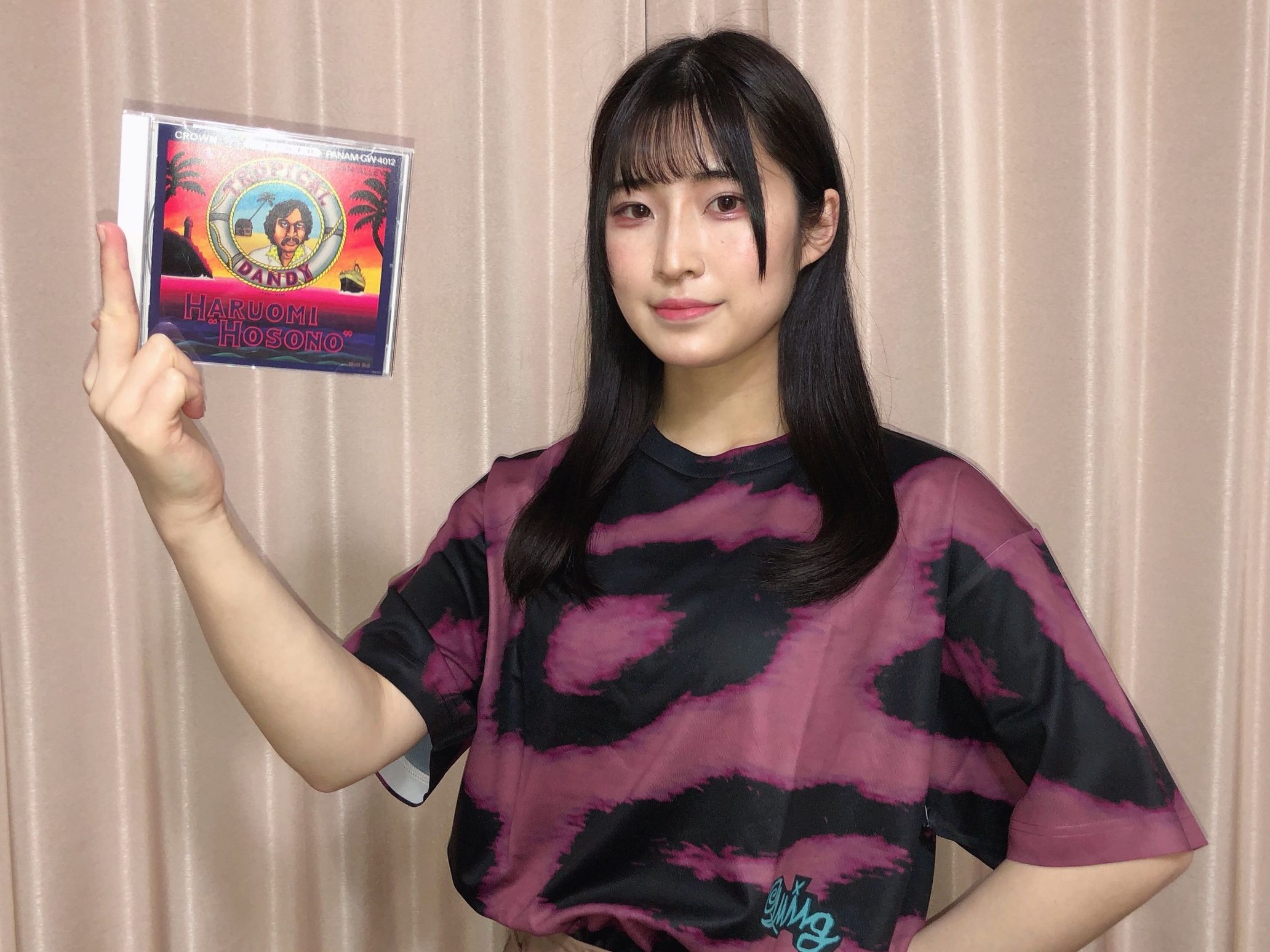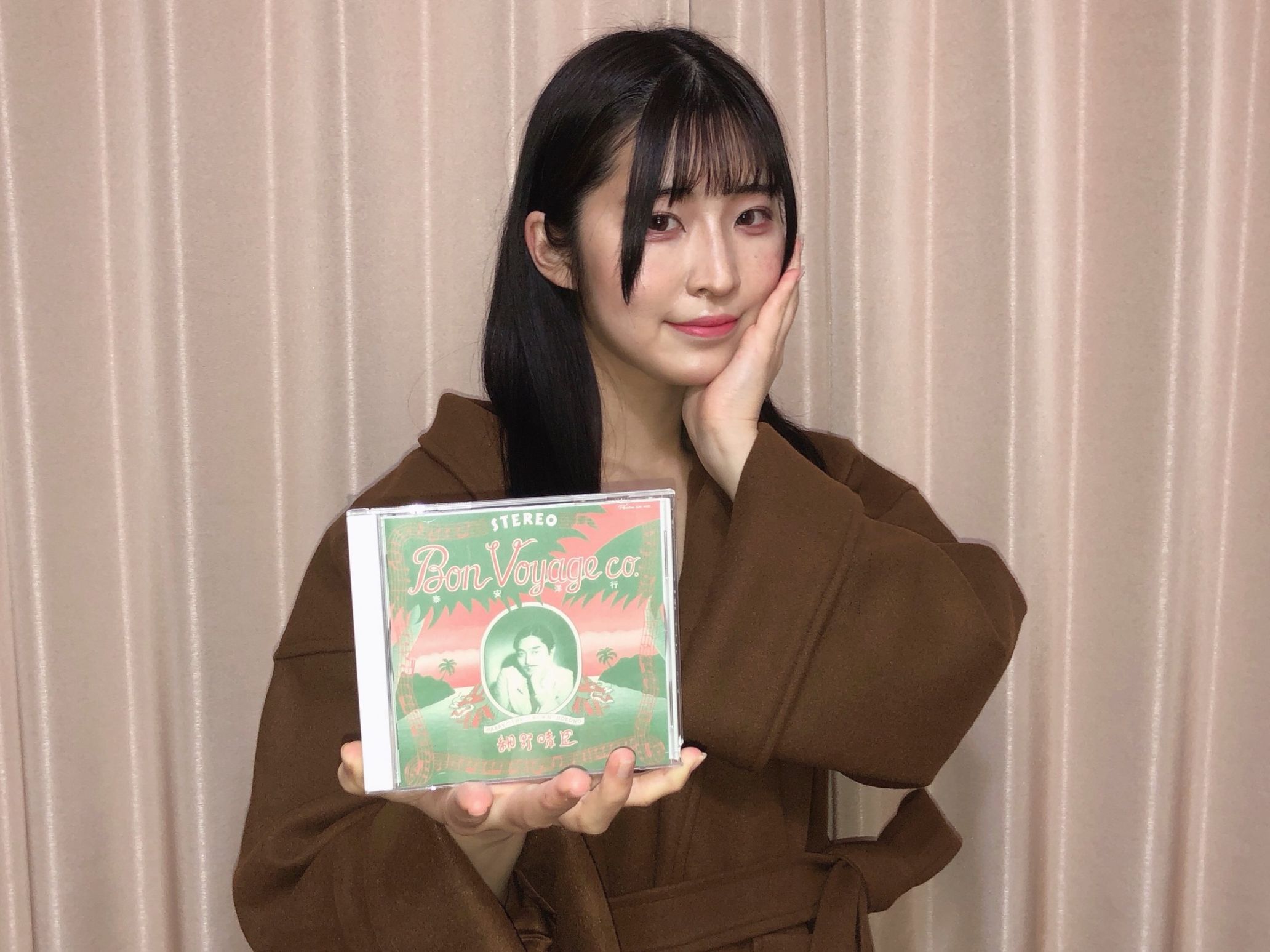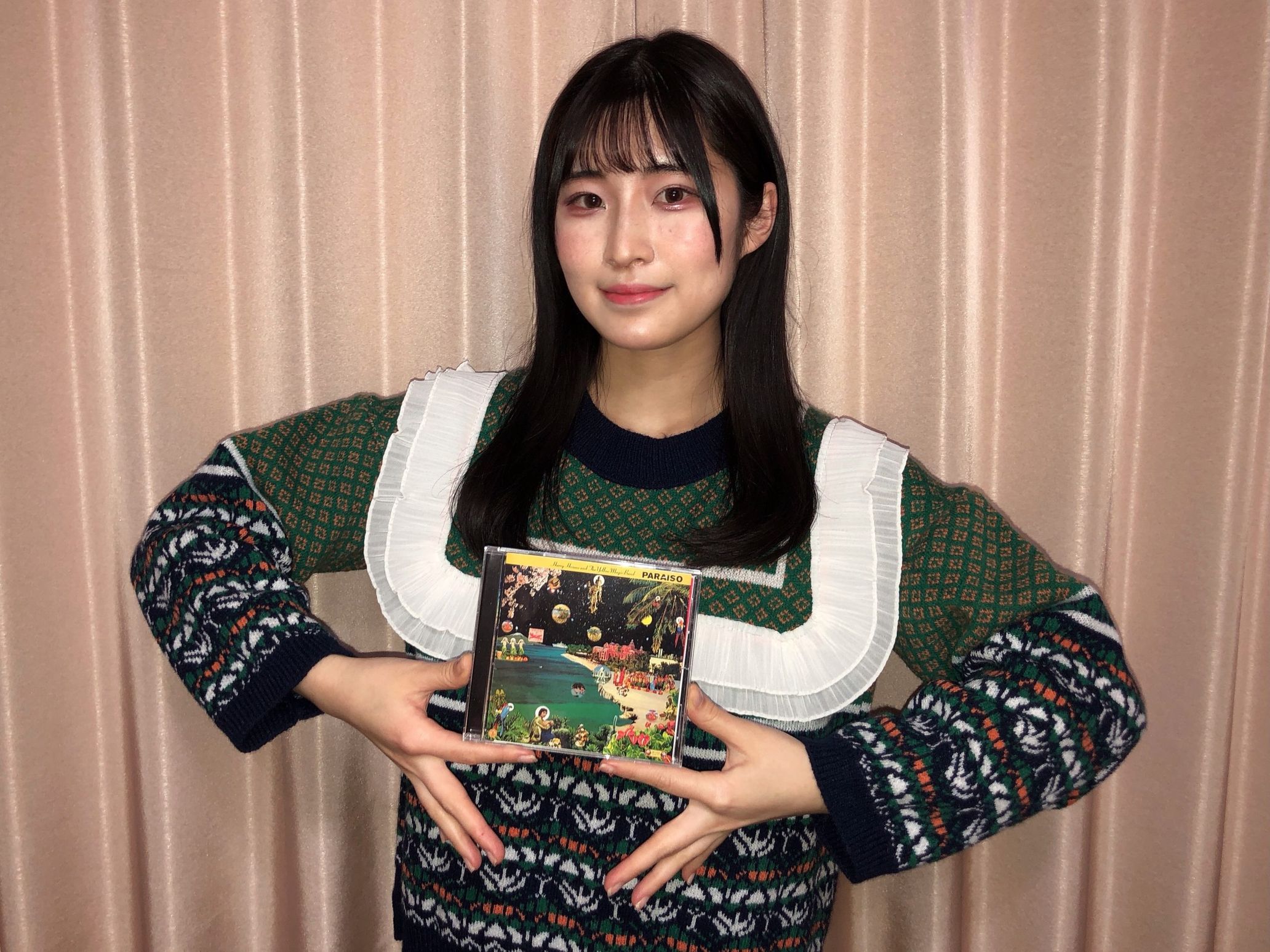It’s been too long…! (We call it a serial but it’s been almost a year, so I’m going to reintroduce myself.) My name is Yua Uchiyama, the writer of the serial, “First Listen: Japanese Music Review” for TOKION. I’m a university student and also an active member of idol group RAY.
The reviews I post once a week on note.com (https://note.com/__yuuaself__) feature iconic records from all eras and genres. I write my review of every song from each featured album with little prior information to strive for an intuition-based commentary. I find daily enjoyment listening to such music.
While the records I choose to review on note.com have no consistent theme, I wanted this column to focus on tracing the history of the Japanese music movement. With this theme in mind, I hope this serial can be a catalyst for my readers to learn about and enjoy new music.
Volume 2 is a review of Haruomi Hosono’s Tropical Trilogy, which is made up of his albums Tropical Dandy, Bon Voyage co., and Paraiso. (I have a tendency to review every song for each record, but I will limit my full album reviews to one record this time, since it may be too much for my readers if I covered all of them!)
I’d like to start off listening to the Tropical Trilogy’s first record, Tropical Dandy, which was released in 1975 as Mr. Hosono’s second solo album. I’m curious to hear how his sound developed after his time with the band Happy End and after his first solo album Hosono House, a country/folk record.
Tropical Dandy
This is truly tropical dandy…!
“CHATTANOOGA CHOO CHOO~♪” is the signal for departure from Japan. And so the carefree tropical vacation begins. The temperature rises, the Caribbean breeze blows, and you’re tanning on a white beach drinking a cocktail with a hibiscus flower in it. One can imagine such a scene within seconds. But in the next second, you’re flown to a Persian market or to a more humid, tropical region. In other words, there’s no time to zone out on this vacation.
You’re immediately presented with exactly what you’d imagine a tropical vacation to be like. It’s almost too obvious. Is this too good to be true? Upon research, Mr. Hosono defines the adjective “exotic” — a term he frequently uses in the Tropical Trilogy — as: “bringing something that is far away closer for examination”. It’s as though he’s saying, “this is what you imagine when you think of the ocean, vacations, Asia, and exotic places, right?” with raised eyebrows and a smirk on his face, checking to see our reactions. I think I finally understand where his perspective is coming from.
This work is grounded in the nostalgic American sound but incorporates Okinawan or Hawaiian-like melodies, Latin music’s spirit, and other “close but far” exotic sounds. In Latin music, salsa gained popularity during the 1960s~1970s in the cultural hub of New York. Mr. Hosono interpreted “salsa” as a sauce, and thus referred to his tropical-sounding music in this record as “soy sauce music”. Mr. Hosono created his own flavor by mixing some soy sauce into the music of different cultures and regions from across the Pacific.
On top of taking us on our dream vacation, he also straddles eras. We’re about to embark on this music journey around the world along with Mr. Hosono!
(Artist Memo)
Haruomi Hosono is a musician from Tokyo. He made his debut with the band April Fool and started Happy End in 1970. He began his solo career in 1973 while playing in the band Tin Pan Alley and producing music for a variety of artists. In 1978, he started his project Yellow Magic Orchestra (YMO). Since YMO disbanded, Hosono has started multiple labels, written songs for artists, and has continued to perform.
Next up is Bon Voyage co. This record was the second album in the Tropical Trilogy and released in 1976. There are even more exotic elements in this record. I wonder where he’ll take us next!
Bon Voyage, co.
This is the first time I heard the word “chunky”.
Memories of tropical trips, American music (Mr. Hosono’s musical roots), desire, and longing are all intertwined… a hodgepodge of musical genres, aka “chunky music…! Included are elements of Okinawan and Latin music, similar to Tropical Dandy. There are a variety of other genres in the mix, but his homage to the New Orleans sound is most notable.
Hosono has a deep love for New Orleans (or so I sensed). After reading a couple articles, he seems to have been greatly influenced by New Orleans star Dr. John. He’s mentioned that Dr. John’s Gumbo is a necessary record to listen to in order to understand New Orleans music. The more I looked into it, the more I found information on Mr. Hosono’s love and respect for New Orleans and Dr. John’s music.
“Chunky music”, a phrase coined by Hosono himself, is derived from the New Orleans dish, gumbo. He associated gumbo with Japanese chanko stew, paired the word “funky” with “chanko”, and came up with “chunky”. Both “soy sauce music” and “chunky music” are characterized by their hodgepodge nature, similar to New Orleans sound. I understood its direct influence on Mr. Hosono’s music after listening to Dr. John’s Gumbo. I thought, “this… becomes this… I see!” The heartiest, most elegantly delicious Hosono-flavored tune is “Rochoo Gumbo”; I could listen to it countless times.
This record’s “New Orleans-ness” reflects a reality that is “close but far” in terms of both era and region. However, the Okinawanan elements of the album are vivid and fresh; it’s a scene that feels familiar. Perhaps it feels that way because I visited Okinawa in high school for a graduation trip. I ate goya chanpuru, saw the shisa, bought a star sand keychain, and went home… Was that enough for me to really experience and understand the place, though? I suddenly felt insecure that it was just a superficial experience. I felt uneasy that my memory of my short trip there was the only thing making it feel “close”… But! My graduation trip was so fun…!! It’s not necessarily bad to give into the cheesiness of such a trip. Looking back, maybe this was a very exotic experience for me.
I want to take care of the “true nature” or the “reality” of things. I also think that the portions that aren’t characterized as “real” are conducive to the imagination and therefore fun. But like Tropical Dandy, I find the affected, unexplained nature of his music kind of funny. You can’t hate it. You even grow to love it. Perhaps this dreamlike musical journey around the world is viable precisely because it’s unexplained…!
The last record in the Tropical Trilogy is Paraiso. I feel like we’ve been all across the world to plenty of different places already. I wonder where he’ll be taking us this time. I’ll be reviewing each song from this album!
Paraiso full album review
1. “Tokio Rush”
This reminds me of the atmosphere of the film Always: Sunset on Third Street. The whimsical honking sounds make it all the more fun and exciting. Mr. Hosono’s singing voice is the perfect combination of relaxing and joyous.
2. “Shimendoka”
We’re flown out of Tokyo immediately and taken into a different world of synths and gamelans. The lyrics mention “India”, “the Caribbean”, “Chaldea, the country of magicians”… I don’t know where we’re going, but I can feel his hunger to get to the next destination. The endlessly calming synth rhythms excite me.
3. “Japanese Rhumba”
Very ethnic. All the lyrics are in katakana. It’s charming, like awkward Japanese spoken by foreigners. I hear elements of Chinese melodies as well as influences from Latin regions and Hawaii. Where are we…!? It’s a hodgepodge! It’s overflowing with his speciality — chunky music. Konbanwa… banwa… oyasuminasai…
4. “Asatoya Rhumba”
A cover of an Okinawan folk song. The sonic trip is never ending. My head is full of questions of ”where are we… now….!?” Then I suddenly realize how insanely diverse Mr. Hosono’s singing voice is.
5. “Fujiyama Mama”
It starts off with claps and a strange melody. Mr. Hosono’s expressions and ideas are infinite. At first, his singing reminds me of Kabuki. But I panic because the next second, he’s singing in a cute, kindergartener kind of way. The background music is energetic and happy, as usual. Negative ion.
6. “Femme Fetale”
Wild birds are flying. The Amazon. Where has he taken us now…? The only clues are in the lyrics, “this is the end of the Earth, a mysterious oasis hiding in the city”. Apparently, YMO band mates Mr. Ryuichi Sakamoto and Mr. Yukihiro Takahashi played on this song. To think that Mr. Hosono already had YMO in mind when he wrote this…! A captivating tropical region. The percussion brilliantly stirs up the imagination. Digital birds are flying around perpetually.
7. “Shambala Signal”
We ultimately leave Earth and go into outer space. An uneasy rhythm and a bell-like sound. Perhaps we’re communicating with the universe. Inorganic matter. He slowly goes crazy in the latter half of the tune; it’s innocently violent. This is also indicative of Mr. Hosono’s style. He’s so multifaceted… limitless…
8. “Worry Beads”
We’re back on Earth…! Mr. Hosono’s calm voice is comforting. But where are we… (how many times have I asked this)? Apparently there’s a desert. We are completely under chunky music’s spell at this point. How fun. The sounds are Chinese. I feel like he uses more synths compared to the other Tropical albums.
9. “Paraiso (Haraiso)”
The trip is coming to a close. Our tropical adventure is concluding. Please don’t say “bye bye bye good-bye”…. I want to keep being swayed by your rich and dulcet singing voice. There’s a section that surprised me in the middle of the song, where I was enveloped by more synths than ever before. It made me feel like this dreamlike paradise was going to last forever. Mysterious footsteps. It’s silent, and running footsteps are coming closer! Is what I thought, but then I’m told, “what’s coming up will be even better!” (Seems to be a hint about YMO). It felt similar to Sailor Moon’s famous line, “in the name of the Moon, I’ll punish you!” It somehow made my heart flutter.
The title of the record is derived from the word “paraíso”, which means “paradise” in Portuguese. In Christian terms, it means “heaven”.
This fantastic and dreamlike time… it truly was heaven…!
A hodgepodge of musical genres was displayed in this “chunky music” album. It was nice soy sauce (?).
Somehow, I thought the quality of sound on this record was cleaner and more digital-sounding compared to Tropical Dandy and Bon Voyage co. When I looked it up, I found that Paraiso was made under Alfa Records instead of Crown Records, and therefore different studio equipment was used. I also felt that the synths, the sound of organized beats, and “Femme Fatale”— the track Mr. Sakamoto and Mr. Takahashi played on — were all in preparation for YMO.
“One can enjoy something without knowing the real thing, as long as they can imagine and believe”
I was able to hastily experience all three works in Mr. Hosono’s Tropical Trilogy.
(Leaving reality aside for a bit), the trilogy of Tropical Dandy, Bon Voyage co. and Paraiso felt like the paradise that everyone imagines. We were taken to Tokyo, New Orleans, China, Hawaii, Okinawa, India, the Himalayas (there’s probably more) on a musical world tour. I’m so sad to bid it farewell…
That reminds me. I used to order the “Milan-style rice gratin” at Saizeria. To be honest, I didn’t know what or where Milan was when I ordered it, but it felt “authentic”… By experiencing this trilogy, I was reminded that I enjoyed the dish because the name “Milan-style rice gratin” in itself was appealing and felt trustworthy.
What if foreigners’ image of Japan is still ninjas and samurais… It makes you wonder.
One can enjoy something without knowing the real thing, as long as they can imagine and believe.
… was that too culty? Mr. Hosono’s “chunky”, “soy sauce” sound is self aware. We can travel anywhere within his realm of fiction.
Volume 2 was a long time coming, but there was a lot to unpack. Now I’m all full and very satisfied. I wonder what music we’ll encounter next… I’m excited! Stay tuned!
Translation Mimiko Golden




